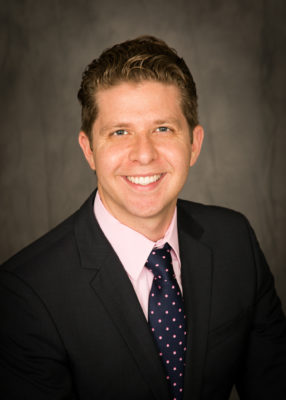If your child experiences a concussion, it can be scary to think about the effects on their developing brain. The good news is, more than 85% of concussions heal well if managed properly early on.
“Early, appropriate treatment prevents kids from having to come see me as a neurologist,” says Dr. Sharief Taraman, pediatric neurologist and director of the CHOC Children’s Concussion Program. “It’s important to do as much as we can to prevent kids from getting a concussion, prevent reinjury, and treat them as aggressively and appropriately as possible in the early intervention stages.”

Follow these do’s and don’ts for proper prevention and treatment of concussion. If your child does sustain a concussion, be sure to see your pediatrician as soon as possible.
- Do protect a young brain
Athletes should be taught safe playing techniques, equipment maintenance and to follow the rules of the game. Always wear a helmet while playing contact sports like football, hockey and lacrosse, and during activities like horse riding, biking, skateboarding or snowboarding. Helmets should fit correctly and be in good condition.
- Don’t miss the signs
A concussion isn’t always obvious. Watch for these signs in your child or teen, especially while they are participating in sports. Symptoms may take up to a day to appear after an incident.
- Headache
- Nausea or vomiting
- Balance problems
- Dizziness
- Visual problems
- Fatigue or drowsiness
- Sensitivity to light or noise
- Numbness or tingling
- Dazed or stunned
- Irritability
- Sadness
- More emotional
- Nervousness
- Trouble falling asleep
- Feeling mentally “foggy”
- Feeling slowed down
- Confused about recent events
- Sleeping less or more than usual
- Difficulty concentrating or remembering
- Forgetful of recent information or conversations
- Answers questions slowly or repeats questions
Seek emergency care immediately if your child or teen has experienced unconsciousness for any amount of time or has changes in alertness, convulsions or seizures, muscle weakness, persistent confusion, repeated vomiting, unequal pupils, unusual eye movements or walking problems.
- Do sit on the sidelines
The most important thing your child should do if they are injured during a sports activity is to immediately stop playing. It’s crucial that they avoid more hits, jolts, shakes or bumps to the head or spine. Getting back in the game is not worth the risk. Remember, the signs of concussion aren’t always clear, so when in doubt, sit it out.
Athletes may not want to tell their coach if they had a concussion. Encourage them to come forward if they have an injury, or if they notice a teammate is injured. Young athletes should never ignore a head injury or impact to the head.
- Don’t skip treatment
Even a mild concussion should be evaluated by a doctor. Get in to see your child’s pediatrician as soon as possible.
When a concussion is severe or symptoms won’t go away, talk to your doctor about a referral to the CHOC Children’s Concussion Program, which includes pediatric sports medicine specialists, neurologists, neurosurgeons, neuropsychologists and rehabilitation therapists who are all trained in concussion management.
- Don’t rush recovery
Rest is important immediately following a concussion. For 24-48 hours, your child should stay home from school and get plenty of quiet time and mental rest. This includes limiting activities like:
- Television
- Texting
- Social media
- Reading
- Driving
- Doing homework
- Social interaction
- Attending loud events
After the first 24-48 hours, light activities may help speed up recovery. Most children should be able to tolerate some school after a few days. If they need to miss more school than that, contact the school and your doctor to help intervene with short-term adjustments. Before returning to sports, be sure that symptoms have resolved and get medical clearance from your child’s doctor.
- Do prevent future injury
Parents, coaches and athletes should be extra cautious to prevent future concussions. One concussion is rough enough, but additional injury is even worse. Research has shown that repeated jars to the head can have long-lasting effects on the brain. And, if a child or teen suffers a second concussion before the first concussion heals, they are at risk for Second Impact Syndrome, a life-threatening condition.
“The CDC has called concussions an epidemic in the United States,” Dr. Taraman says. “Kids really do get into trouble if a concussion is not recognized, and if we don’t take the proper steps to get them better and avoid those second injuries, which can be catastrophic.”
—
The post 6 do’s and don’ts of concussion appeared first on CHOC Children’s Blog.

